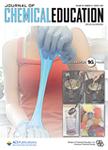版权所有:内蒙古大学图书馆 技术提供:维普资讯• 智图
内蒙古自治区呼和浩特市赛罕区大学西街235号 邮编: 010021

作者机构:Escuela Super Arte Principado Asturias Aviles 33402 Spain Univ Oviedo Dept Quim Fis & Analit E-33006 Oviedo Spain
出 版 物:《JOURNAL OF CHEMICAL EDUCATION》 (化学教育杂志)
年 卷 期:2016年第93卷第12期
页 面:2110-2116页
核心收录:
学科分类:0401[教育学-教育学] 07[理学] 0703[理学-化学]
基 金:Consejeria de Educacion Cultura y Deporte (Government of the Principality of Asturias Spain)
主 题:First-Year Undergraduate/General Second-Year Undergraduate Physical Chemistry Computer-Based Learning Internet/Web-Based Learning Thermodynamics
摘 要:Thermodynamic processes are complex phenomena that can be understood as a set of successive stages. When treating processes, classical thermodynamics (and most particularly, the Gibbsian formulation, predominantly used in chemistry) only pays attention to initial and final states. However, reintroducing the notion of process is absolutely necessary to get to know the final state from the initial state conditions. In general, complex concepts can be better understood through visualization. Nowadays, computer graphics can be used to simulate processes, from initial to final states, including interactivity and time progression. This technology report attempts to illustrate the benefits that the use of computer graphics may provide in learning classical thermodynamics. Our work shows how interactive graphic animations may be used to dynamically study thermodynamic processes. This report illustrates how key concepts in thermodynamic process, such as reversibility and irreversibility, can be easily introduced to students through visualization and interactivity. For this goal, we have tested a programming environment called Processing, widely used in the context of the visual arts to create images, animations, and interactions. The Processing software development environment has four major advantages: it is free of charge and open source, easy to use, multiplatform, and oriented to get immediate visual feedback while programming.